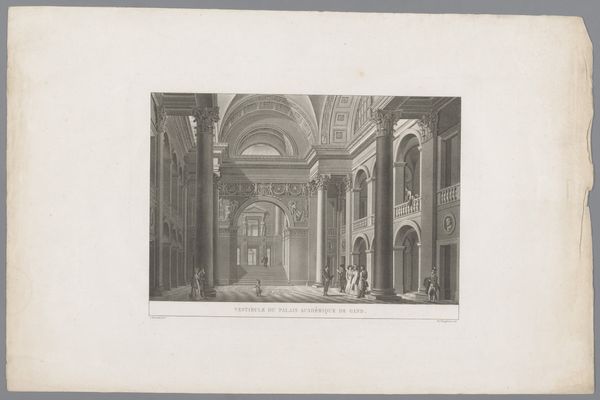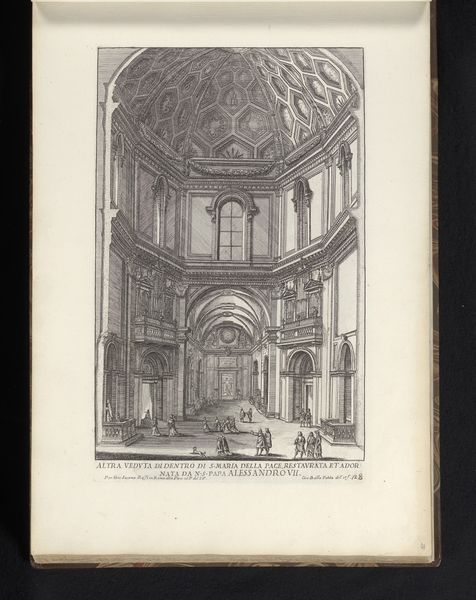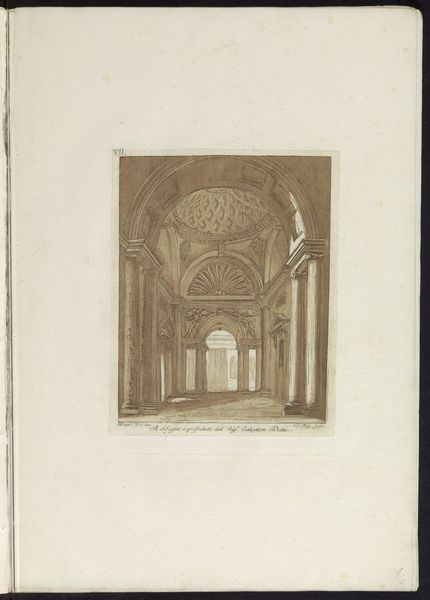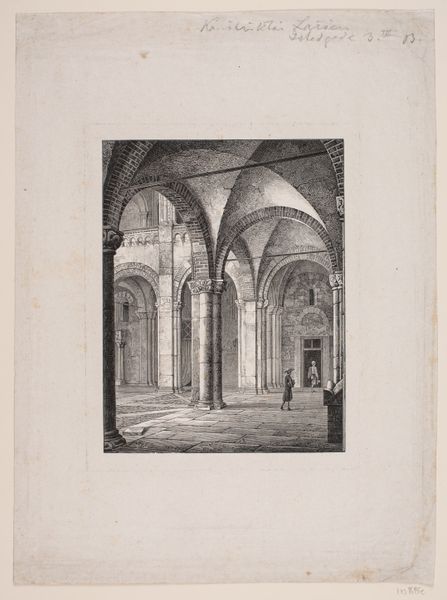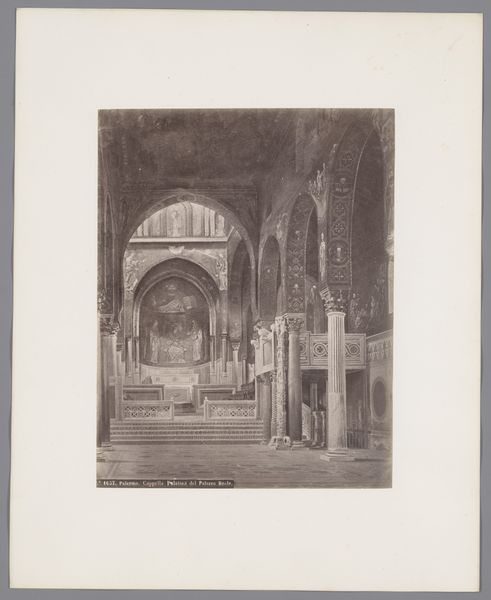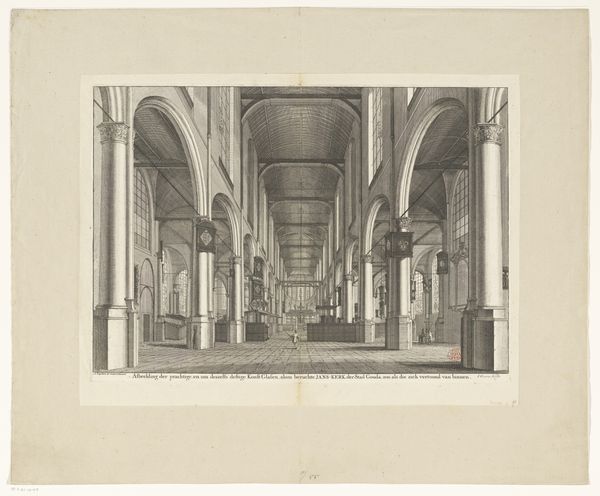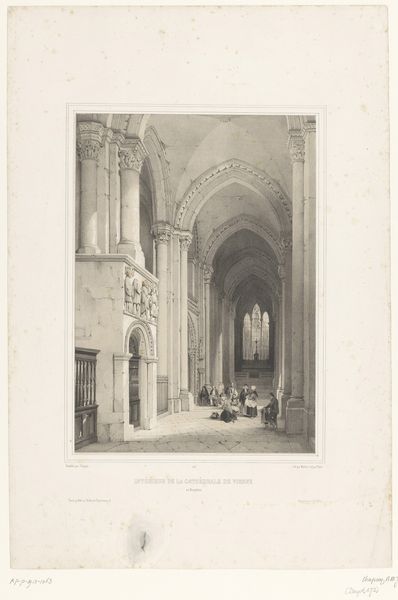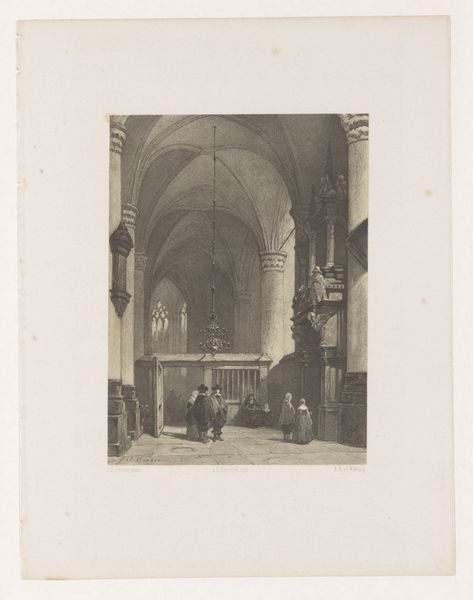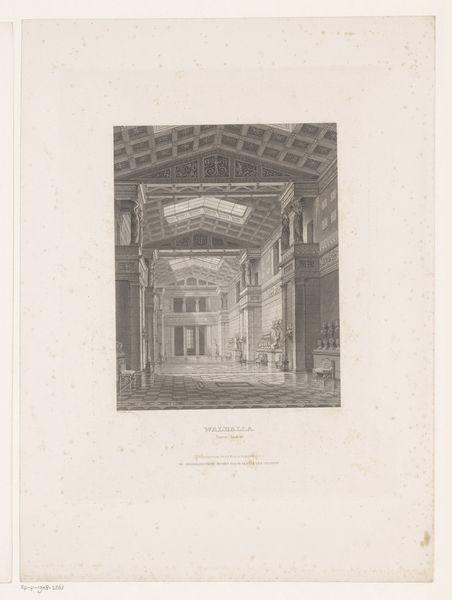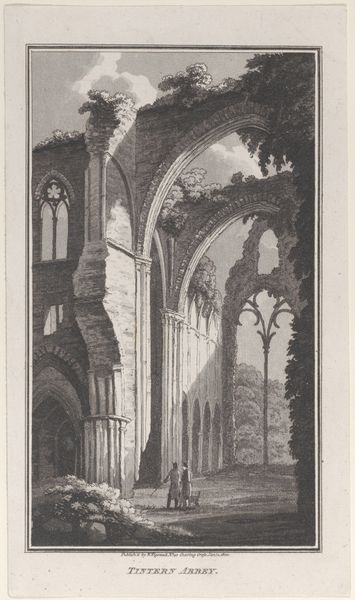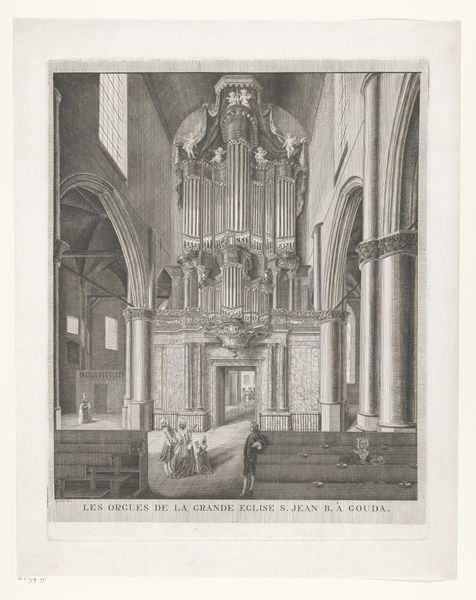
print, engraving, architecture
#
medieval
# print
#
old engraving style
#
geometric
#
engraving
#
architecture
#
realism
Dimensions: height 110 mm, width 67 mm
Copyright: Rijks Museum: Open Domain
Curator: Here we have a photo reproduction of a print, titled "Fotoreproductie van een prent van het interieur van de Dom van Aken", dating roughly from 1860 to 1885 and credited to Jm. v. Ph. Frey. It depicts the interior of Aachen Cathedral. Editor: Immediately, I am struck by the immense height, conveyed solely through intricate lines etched onto the plate. There's a kind of austerity, but softened by the checkered floor. Curator: It’s interesting you point out the checkers; that repetitive pattern pulls our focus away from any individual. The engraving itself speaks to a period fascinated by the precise replication of grand architectural spaces, distributing images more widely to expand influence beyond geography. What power does the structure itself convey, and how does that resonate within the print? Editor: For me, it's less about political power and more about the enduring power of faith. Look at the arches; each one echoes earlier forms, invoking centuries of sacred tradition and continuity through visual cues alone. Light and dark pull our eyes upward, to divine sources, you see? There is visual symbolism inherent in religious settings, which invites the viewer to be introspective about spiritual purpose, heaven, and earth through structural arrangement. Curator: And that brings us to how these interiors were experienced materially. Think of the craftspeople who dedicated themselves to construction and the social dynamics this cathedral created; an economic network based on faith translated into architectural space. But also the production of this print! Labor processes from building the Dom to rendering this faithful image using period tools. I see these geometric shapes also pointing at economic, material stability translated from space into visual object through the print. Editor: Indeed! So the structure itself is evidence and continuation. It’s like a fingerprint from cultural memory constantly pushing forward to new audiences. The image serves as an entry into contemplation through these geometric rhythms – visual stability! Curator: That is well said. I am drawn in to what can be learned about material distribution, readership, and consumption and how that reflects broader systems of values and labor at the time the print was made. Editor: Exactly! This small artifact, after all, still acts as a grand connector across time.
Comments
No comments
Be the first to comment and join the conversation on the ultimate creative platform.
